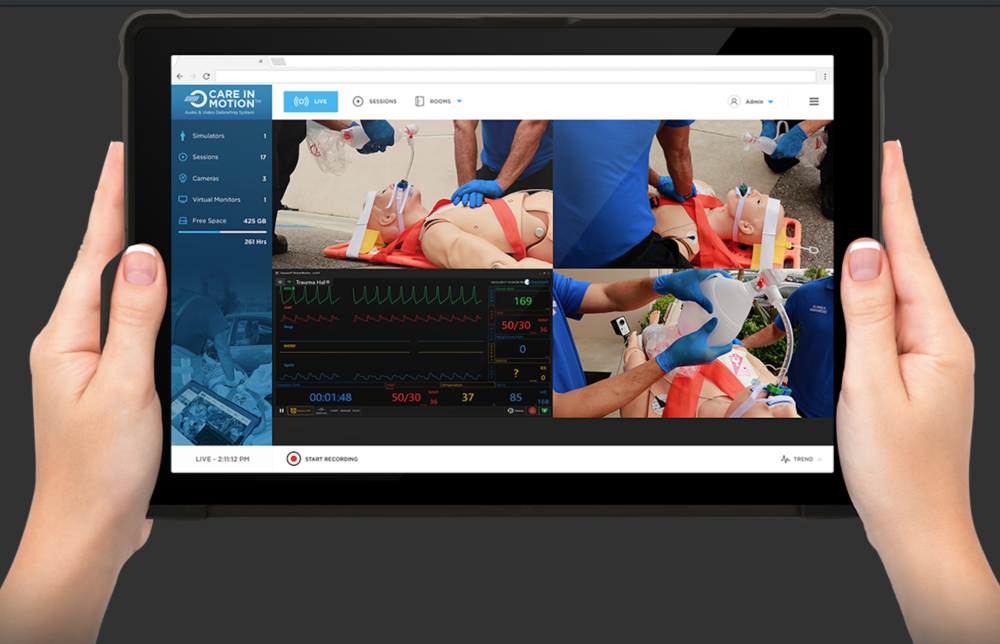Gaumard Offers New Guide for Successful Healthcare Simulation Debriefing
Gaumard recently provided access to an easy to read yet powerful guide on successful healthcare simulation debriefing, from practicum to practice. The free-to-download white paper, available on their website through the link below, will quickly bring new simulation champions into the history, theory, and benefits of the debrief process. Here we excerpt a few parts of “Debriefing Deconstructed: A Guide to Meaningful Medical Simulation Learning Experiences” to showcase why anyone looking for an excellent primer to debriefing should immediately visit Gaumard’s website and download it right now!
Download this free guide and learn more about debriefing in clinical simulation and the methodologies used by today’s educators to strengthen the participants’ learning experiences, which covers:
- A summary of the history and evolution of debriefing
- The primary goals of a successful debriefing session
- The benefits of comprehensive debriefing after simulation exercises
- A discussion of theory-based debriefing and video playback to enrich the learning experience
Gaumard Scientific Company has designed, manufactured and marketed simulators for health care education for more than 60 years. Users worldwide – the military, emergency medical services, major teaching hospitals and nursing schools – recognize Gaumard products for their innovation in simulation in the pre-hospital, obstetrics and gynecology, surgical and nursing care segments.
Sponsored Content:
Key Insights From Gaumard’s Guide to Successful Debriefing
The purpose of debriefing is to deconstruct and reconstruct the actions and thinking that occurred during a simulation learning experience, in order to improve the future performance of the participants. Debriefing is a type of formative assessment because new knowledge is co-created between a debriefer and the participants, rather than merely assessing technical skills and basic understanding.
The ability to facilitate a debriefing is just as important as the ability to facilitate a simulation scenario or operate a manikin. Several debriefing methods have been increasingly used in schools of nursing, schools of medicine, and in clinical practice settings because of the resulting positive learning outcomes. Within nursing education, the National Council of State Boards of Nursing (NCSBN) and the International Nursing Association for Clinical Simulation and Learning (INACSL) agree on the value of debriefing. Both organizations recommend that nurses receive formal training in a theory-based debriefing method along with competency assessment of their debriefing skills.
Five decades of integrating video in a variety of instructional and professional settings have proven to be a valuable method for providing visual and auditory feedback. Throughout this time, the use of video recording has shifted away from merely viewing oneself for self-analysis. Video recordings, in conjunction with feedback, is used to promote positive reinforcement of desired behavior, while redirecting behavior as needed. Video feedback reinforces effective behavior through a positive self-modeling approach and promotes reducing less effective behavior.
Sponsored Content:
Reports of the use of video recording during debriefing have been increasing. Testing of the use of video playback and review during debriefing compared to oral debriefing alone have demonstrated mixed findings. It is challenging to interpret the findings of these studies as a whole because of the high variability of debriefing characteristics reported in these studies.
Although many of these studies have not demonstrated statistically significant differences in the outcome measures, there are improvements in various aspects of learning in both healthcare education and professional practice. Included among these improvements are: improved communication, improved time to recognize and solve a problem, improved skills quality, decreased learner stress, improved ability to self-evaluate critical thinking skills, and improved resuscitation skills.
Video Record Your Simulation Exercises for More Powerful Debriefs
Gaumard’s Care in Motion system is an innovative video recording and playback platform designed to maximize learning through video-assisted debriefing. Developed with a focus on usability, functionality, and reliability, Care In Motion finally makes recording and debriefing simple so you can focus on what’s important—achieving better outcomes. Recorded sessions are available for immediate playback, and powerful tools such as smart filters let you quickly and easily return to key learning points for exploration, discussion, and reflection. Care In Motion features an intuitive user interface that makes adding annotations during and after the session, quick and easy — and with a small footprint that makes mobile and in-situ experiences possible to record. You can also edit and customize notations to facilitate enriched video-assisted reviewing and debriefing!
Get the Free Guide to Debriefing on Gaumard’s Website Now!
Lance Baily, BA, EMT-B, is the Founder / CEO of HealthySimulation.com, which he started in 2010 while serving as the Director of the Nevada System of Higher Education’s Clinical Simulation Center of Las Vegas. Lance also founded SimGHOSTS.org, the world’s only non-profit organization dedicated to supporting professionals operating healthcare simulation technologies. His co-edited Book: “Comprehensive Healthcare Simulation: Operations, Technology, and Innovative Practice” is cited as a key source for professional certification in the industry. Lance’s background also includes serving as a Simulation Technology Specialist for the LA Community College District, EMS fire fighting, Hollywood movie production, rescue diving, and global travel. He and his wife live with their two brilliant daughters and one crazy dachshund in Las Vegas, Nevada.
Sponsored Content:


















